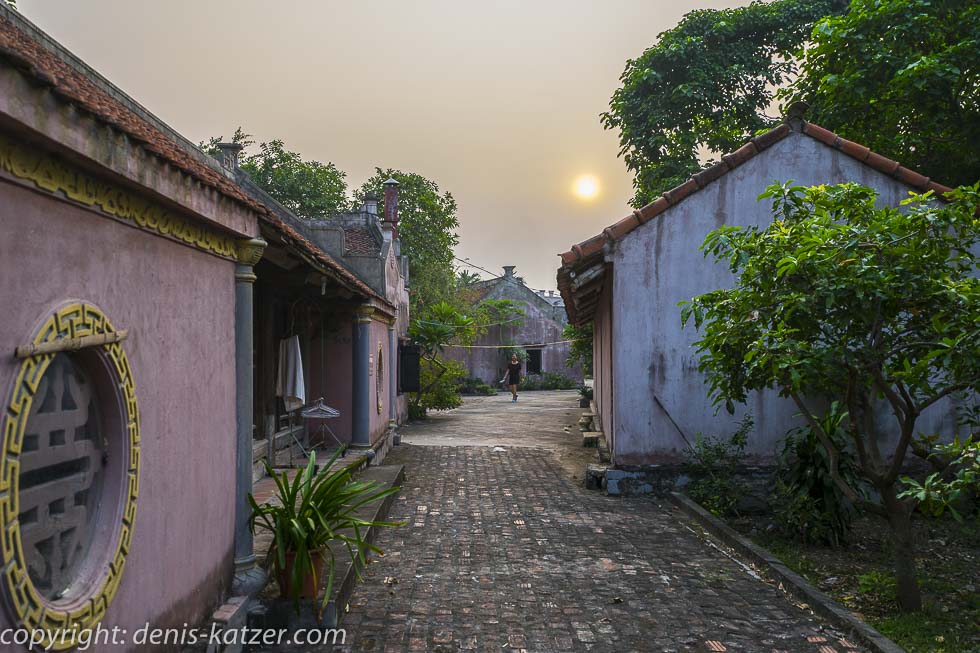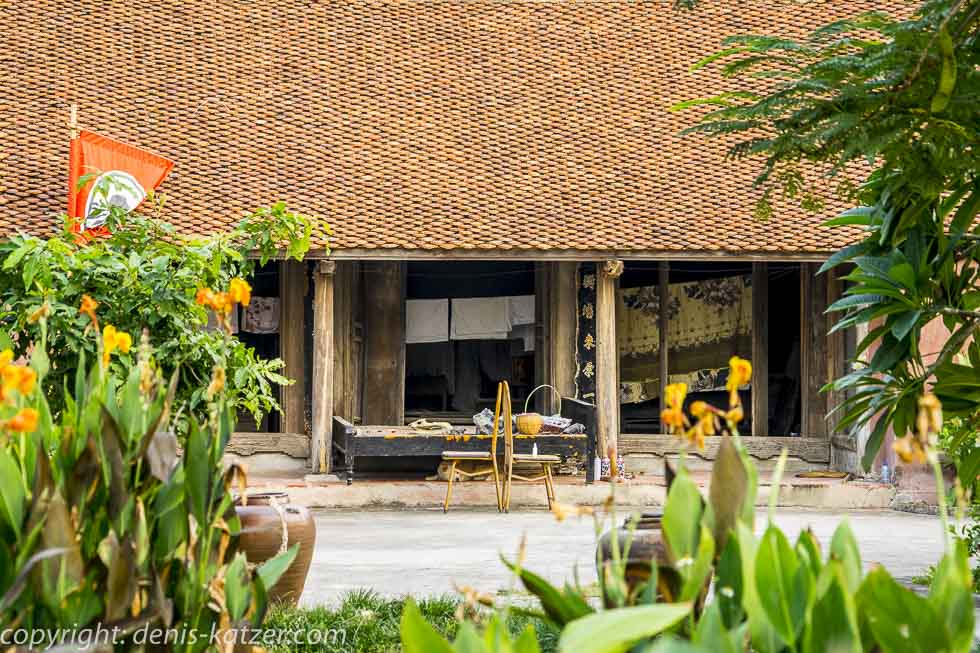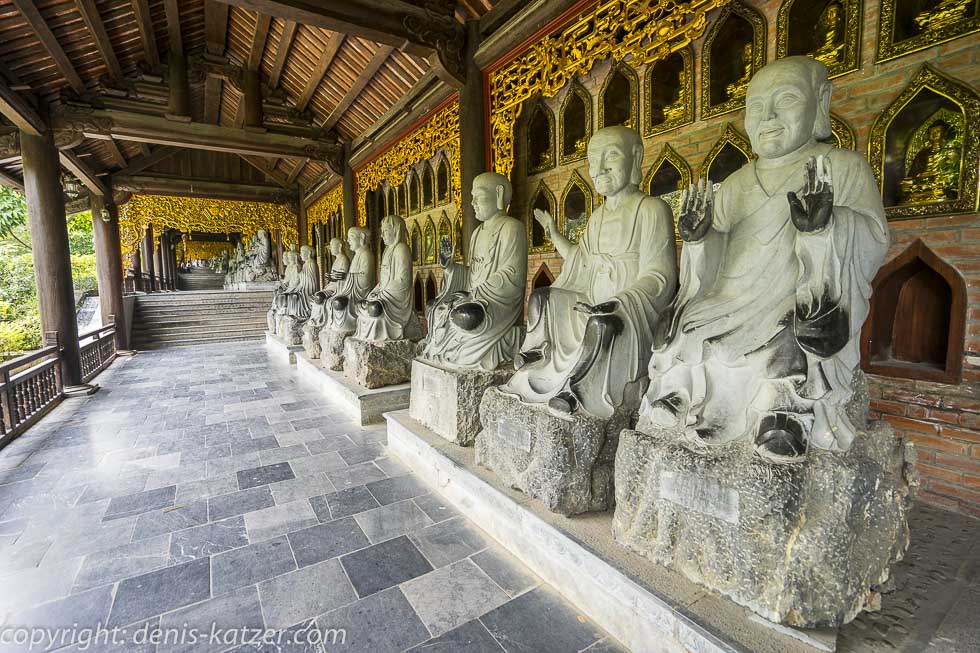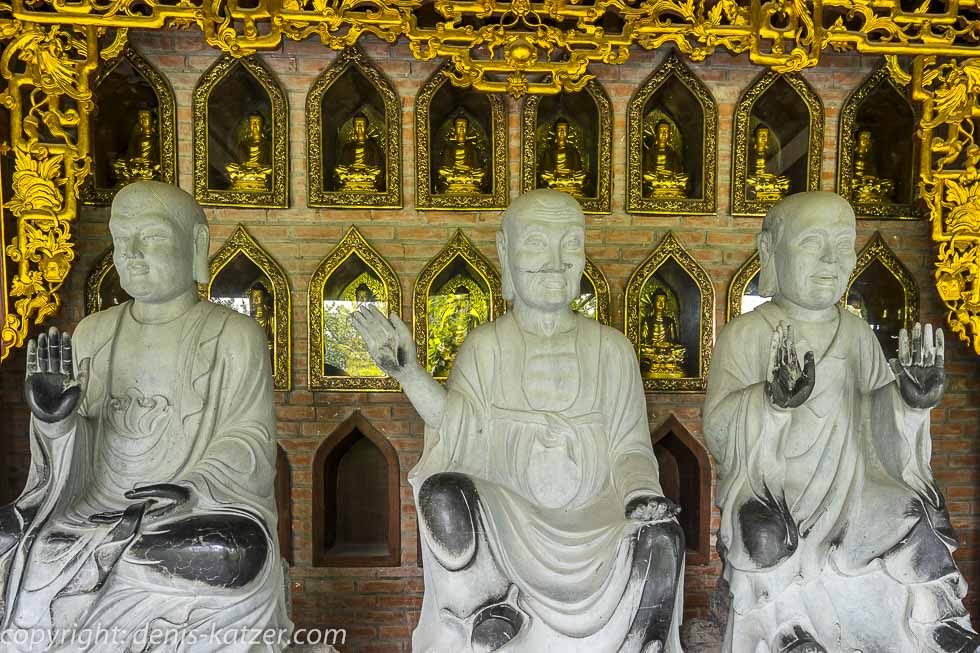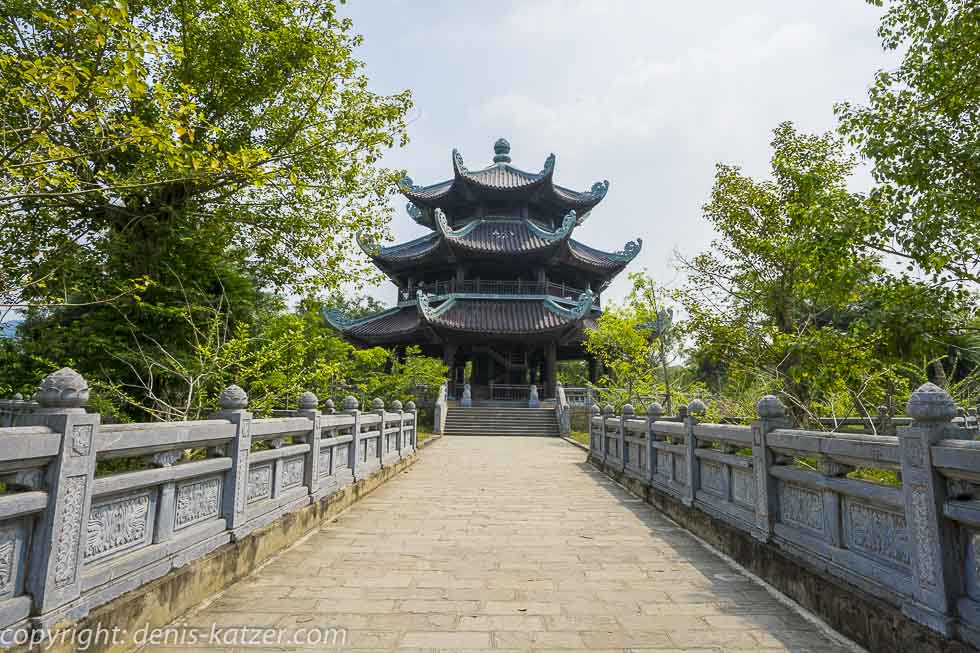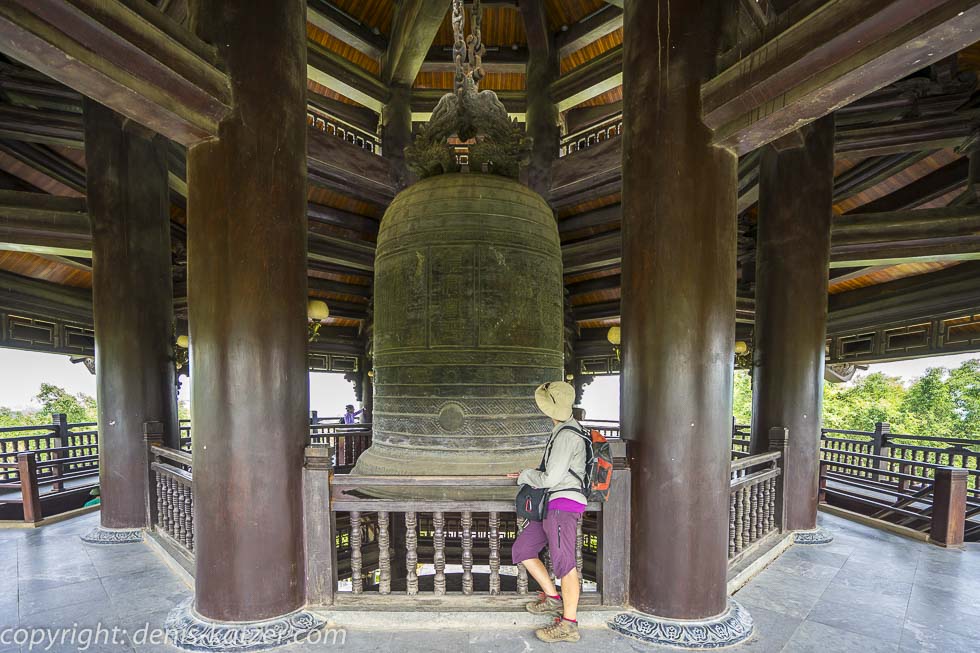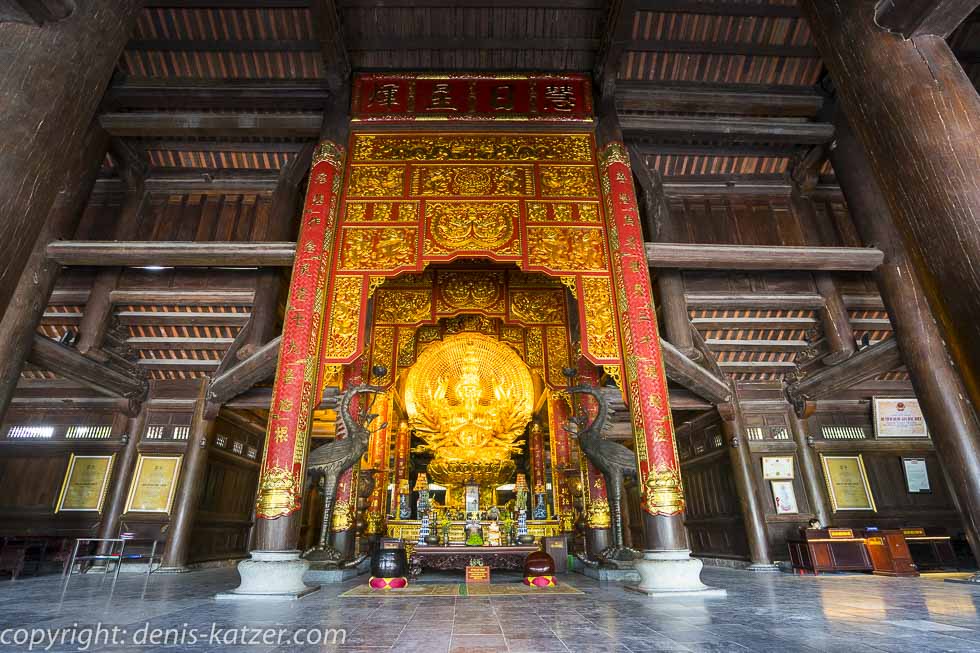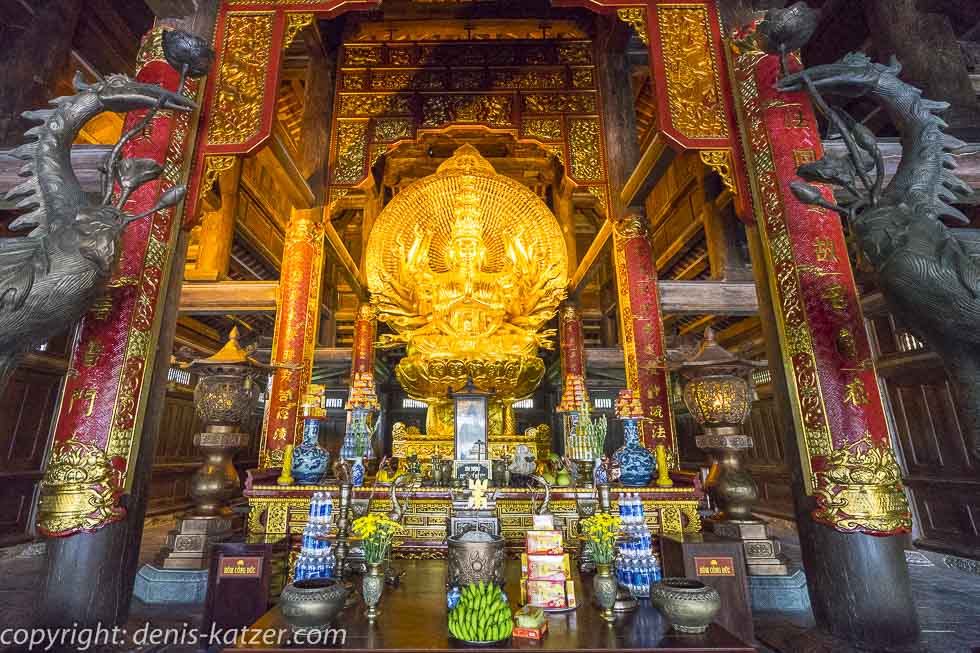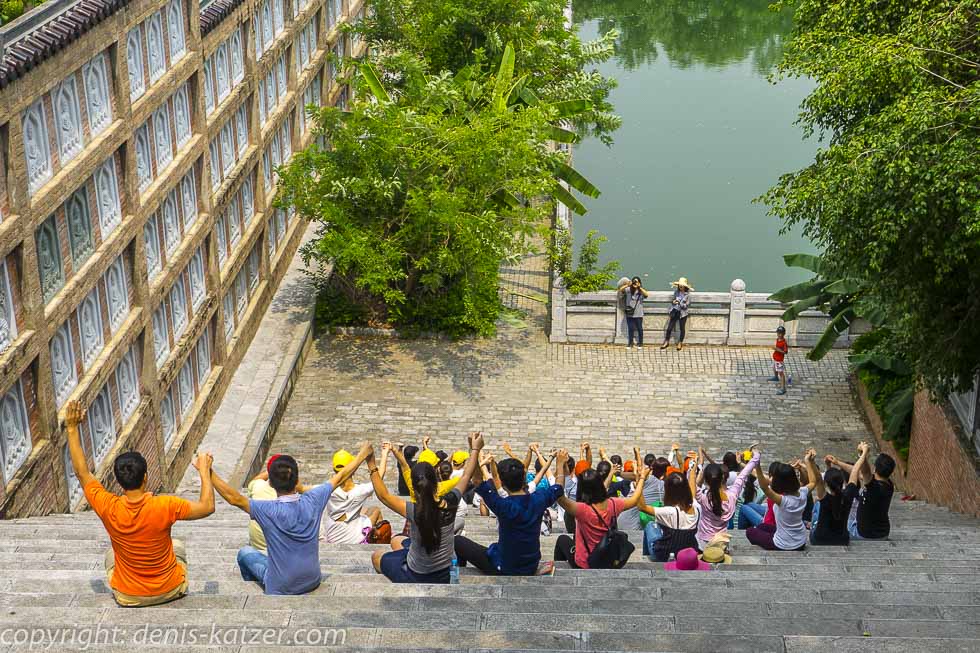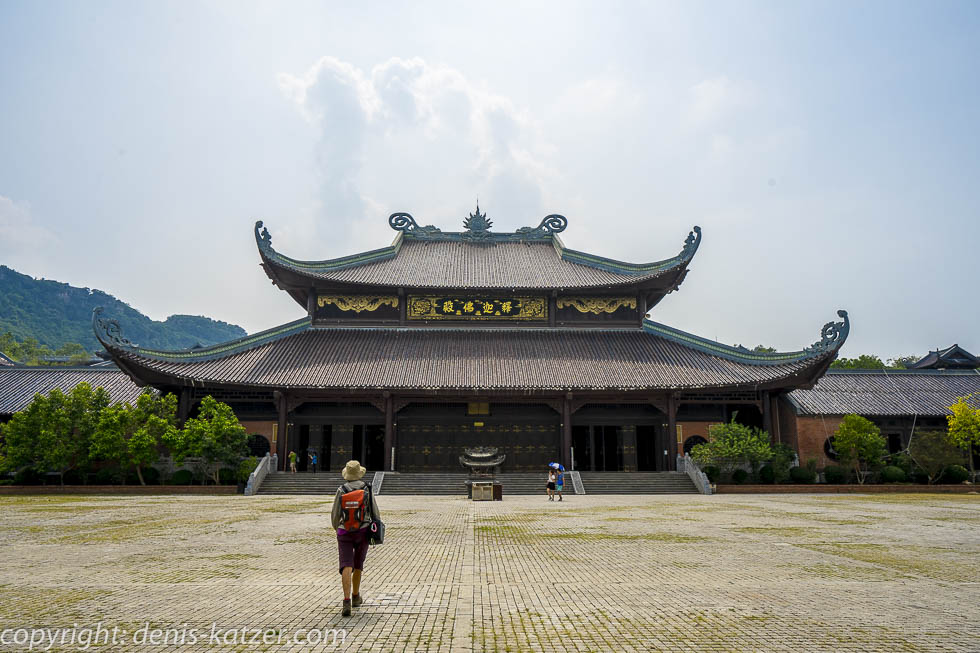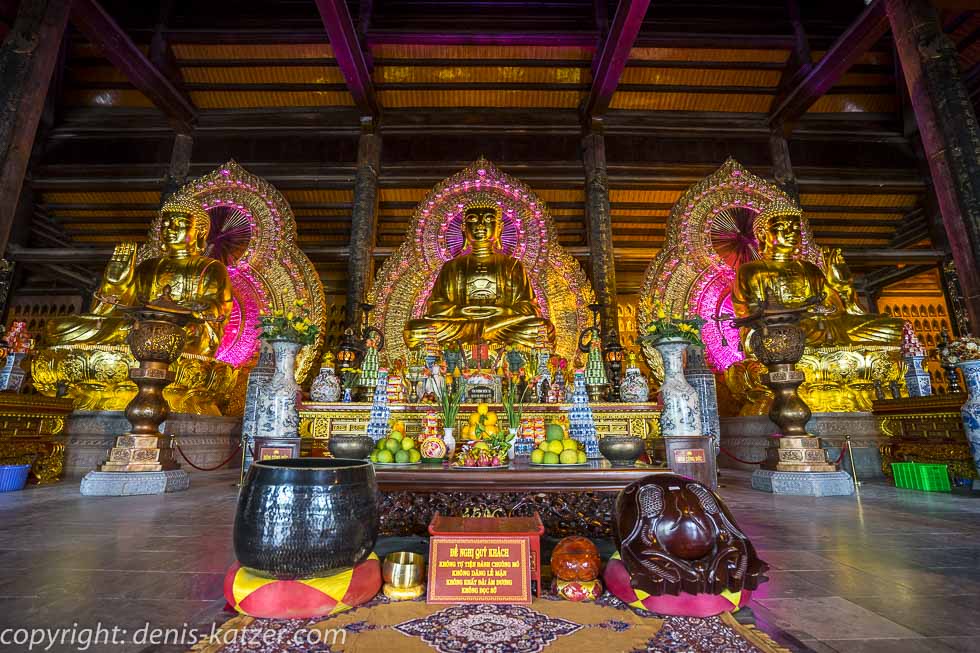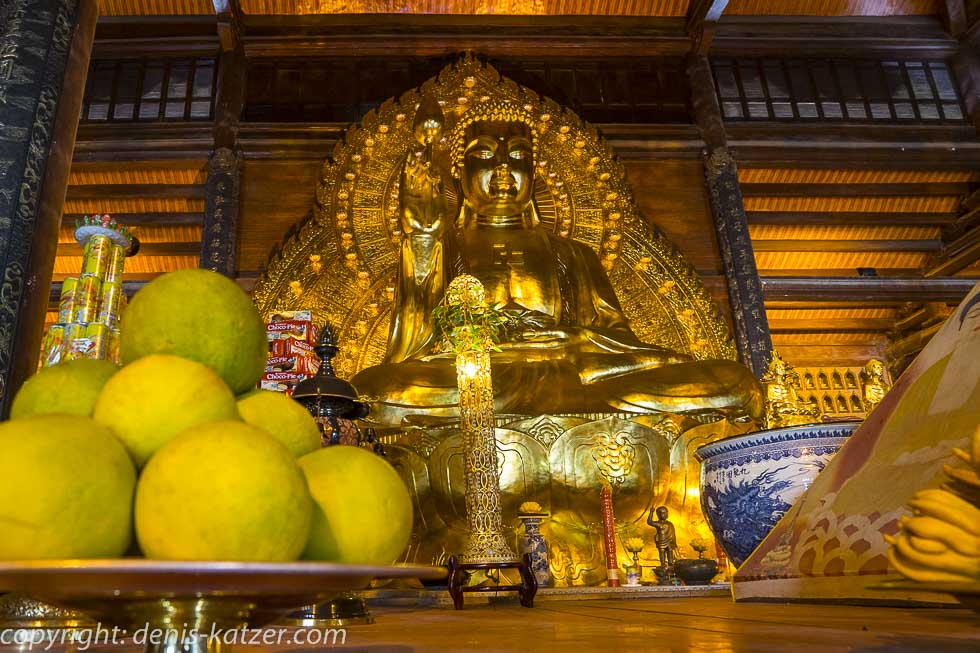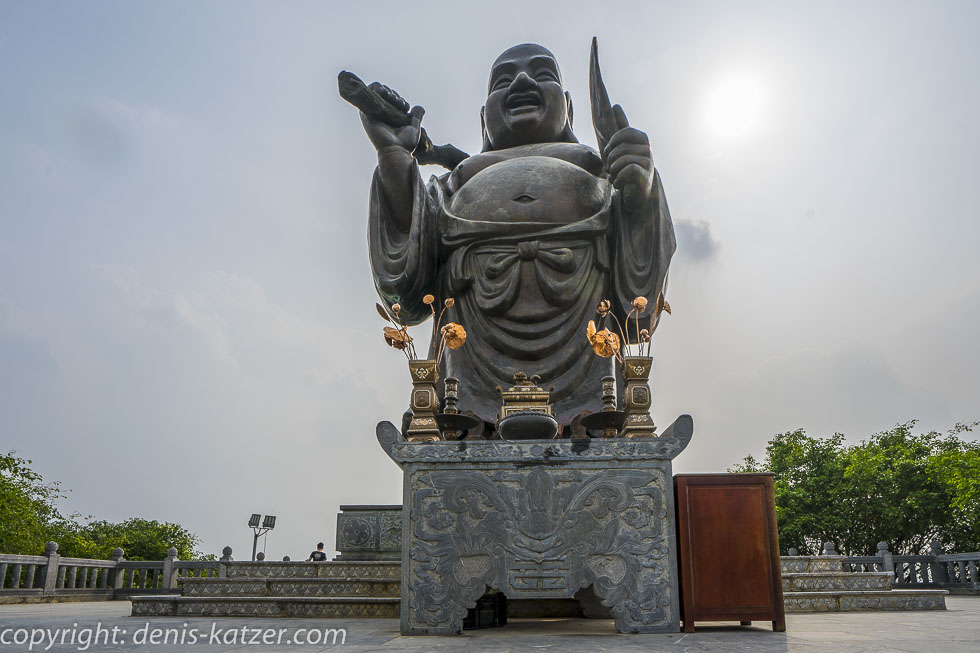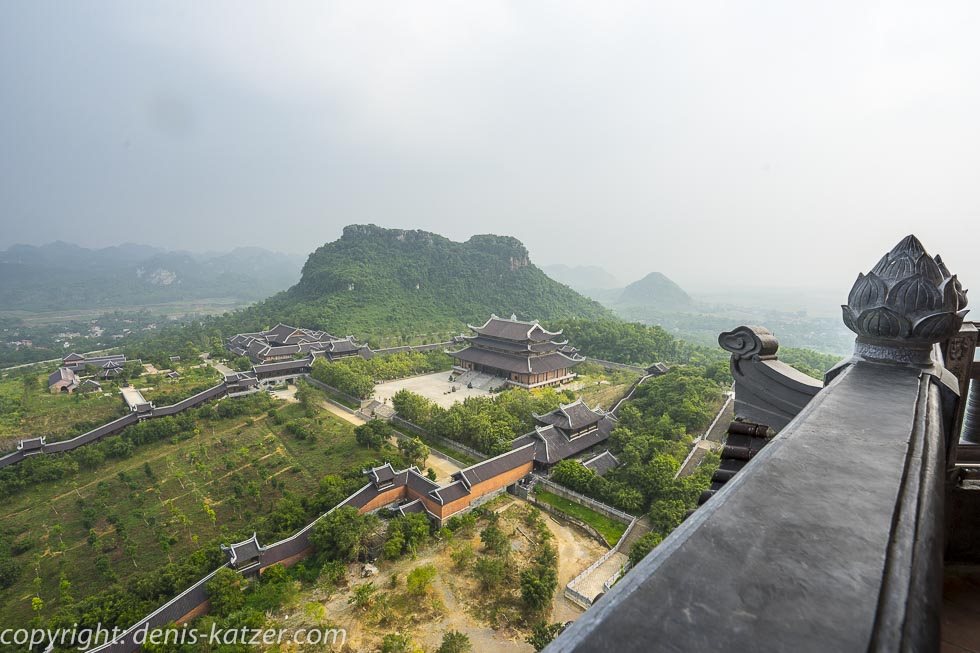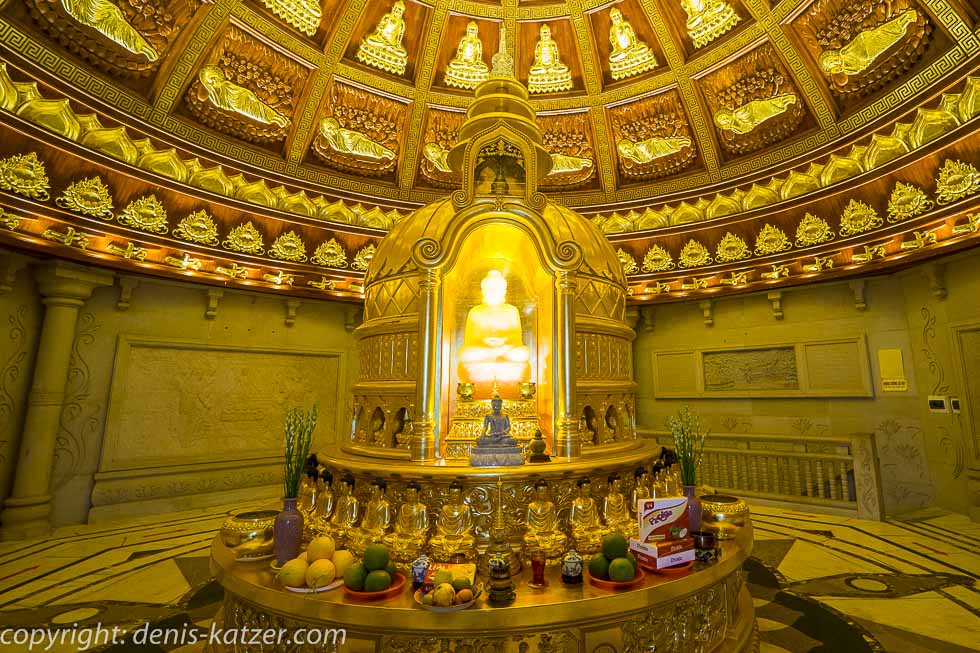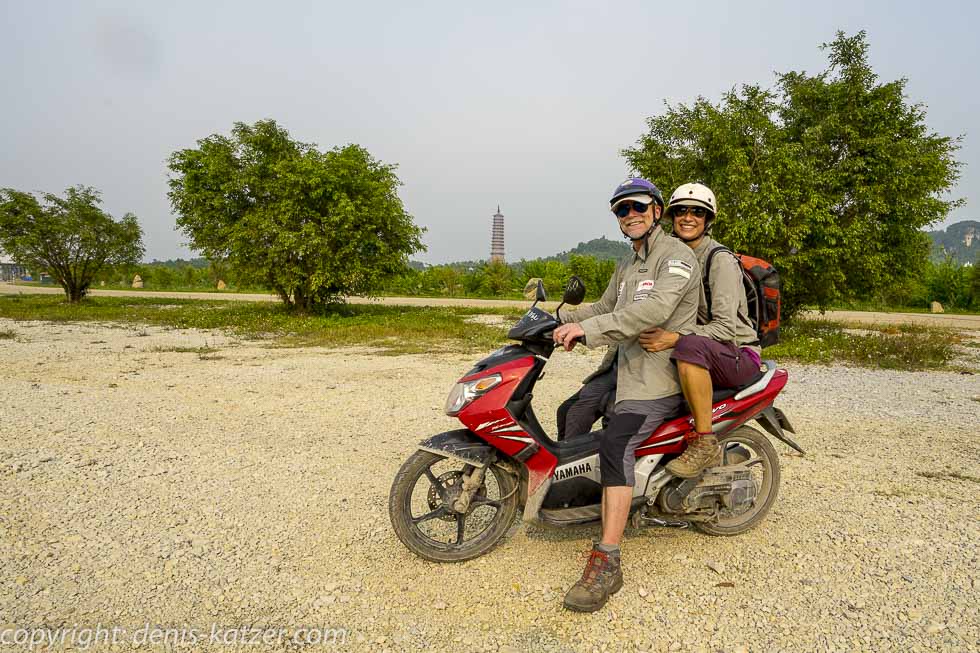
In delirium
N 20°13'01.7'' E 105°55'58.9''
Date:
09.10.2016
Day: 471
Country:
Vietnam
Province:
Ninh Bình
Location:
Ninh Binh
Latitude N:
20°13’01.7”
Longitude E:
105°55’58.9”
Daily kilometers:
Covered 65 km by moped
Total kilometers:
19,417 km
Total altitude meters:
54.661 m
Sunrise:
06:19
Sunset:
5:16 pm
Temperature day max:
37°C
Temperature day min:
24°C
(Photos of the diary entry can be found at the end of the text).
As feared, the rice schnapps is having a delayed effect. A headache and slight dizziness are the price we pay for all the chúc sức khỏe (to health) we had last night. These toasts are strange, because drinking rice schnapps has nothing to do with health. Or is that precisely why you have to wish for an extra portion of health with every glass to alleviate the unpleasant consequences? However. We are taking things slowly today. “Good morning!” Jonny’s energetic greeting echoes painfully in my brain. “It looks like you took the rice schnapps well?” “I’m Vietnamese. The rice liquor doesn’t bother me,” he replies with a laugh.
Because we want to visit the Bai Dinh temple, which is about 35 kilometers away, we rent a moped around noon. “Are you really fit again?” asks Tanja. “Tired but fit enough to drive us safely to the temple,” I reply confidently.
It is 1 p.m. when we park the motorbike in a guarded parking lot at the largest Buddha complex in the whole of Vietnam for a fee. “I’d love to lie down under a shady tree somewhere and have a nap,” I say, because I’m kind of dreading visiting a huge modern temple complex that was only completed in 2010 in this monkey heat. “Don’t let yourself down. Many devout Vietnamese come from far and wide to visit this cultural and spiritual center. You should have controlled yourself a little yesterday and had a few less shots,” says Tanja. “Well, as if I can help it. You saw how they all forced me to drink their rice brew,” I reply in a huff. “That’s all right. Look, there’s an electric car up ahead. That will certainly take us to the entrance of the complex.” “Hm, okay,” I boast to myself and follow Tanja. In fact, this tourist vehicle ferries visitors to the temple entrance. Even though I’m not necessarily a born mass tourist, in this case I’m happy about the decadent, comfortable way of getting around.
In the pleasant shade of eternally long covered corridors, 500 Buddha statues up to 2.5 meters tall and weighing 2.5 tons make their way up the mountain. Despite my increasing tiredness, the numerous, artistically high-quality figures, whose faces all have their own expression, arouse my interest. “Fascinating,” I hear my own words and keep lifting the camera to my eye, groaning slightly. “It says here that these 1700-meter-long corridors are the longest Arhat path in Southeast Asia,” Tanja reads from an information brochure. “Seems too damn long to me. I hope we get to the top soon,” I moan. “These Arhat statues symbolize the path to Buddhism,” Tanja continues to recite. “Ahrat, Ahrat, I keep hearing Ahrat. What does that mean?” I ask, a little annoyed, as at this point I’m longing for a bench to lie down on and rest for a while. “Arhat is the term for a devout Buddhist who has completely abandoned greed, hatred and delusion. The word comes from Sanskrit and means “the worthy one”. “I see,” I reply succinctly. “Do we actually have any water with us?” I ask, because my tongue is now sticking to the roof of my mouth and I can hardly swallow because I’m so thirsty. “I forgot to take it with me, but we’ll find a stall.” “Hm, hope I haven’t collapsed by then.”
On the way up, we pass a three-storey tower in which a 36-ton bell hangs. Underneath it is a 70-ton bronze drum, which I photograph with all my might. “I won’t last much longer,” I groan, thinking of our 7,000-kilometre walk through the Australian outback when we reached a dried-up waterhole with the last of our water reserves. “Where are the damn water sellers now?” I grumble, dragging myself further up. We visit the bronze statue of the Goddess of Mercy, the largest bronze Buddha in Vietnam. The 34-metre-high and 59-metre-long Phap Chu Pagoda rises up into the sky like a mirage, housing a 10-metre-high, 100-ton bronze Buddha. He is flanked by two fellow Buddhas. Together they symbolize the past, present and future. Under normal circumstances, I would find it difficult to admire these megabuddhas illuminated by bright lights, but I am already delirious. “Water,” I hear myself croak. Then I discover the most beautiful sign in recent months, if not years. “Cafe”. With the last of my willpower, I follow Tanja up some more steps. When we arrive at the restaurant, I am startled at first because there is not a single guest to be seen apart from us. Then I catch sight of the barman behind a large counter. “Water please,” I manage to get out. The young man strolls with Asian slowness to the fridge, casually takes out two bottles of water and places them on the counter. “You pay, I’ll drink,” I say to Tanja, unscrew the cap and plunge the saving liquid down my throat. The fire is only extinguished after the second bottle. We sit down on a stone bench and enjoy the view of the valley below us. “I’m going to lie down for a while,” I say and stretch out my tortured body. An hour later, I have recovered so far. We tackle the last few meters up to a thick bronze Buddha statue that smiles at us from the very, very top. And as if that wasn’t enough, we finish off with a visit to the 13-storey viewing pagoda, from where we can enjoy a fantastic panoramic view of the breathtakingly beautiful landscape. Only then do we walk back to our moped to make our way home…
If you would like to find out more about our adventures, you can find our books under this link.
The live coverage is supported by the companies Gesat GmbH: www.gesat.com and roda computer GmbH http://roda-computer.com/ The satellite telephone Explorer 300 from Gesat and the rugged notebook Pegasus RP9 from Roda are the pillars of the transmission. Pegasus RP9 from Roda are the pillars of the transmission.


